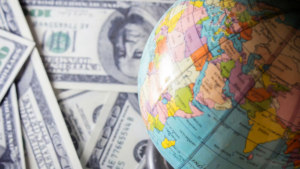Soviet Union
Union of Soviet Socialist Republics (U.S.S.R.) was actually the Soviet Union. The Russian Soyuz Sovetskikh Sotsialisticheskikh Respublik or Sovetsky Soyuz, are the former northern Eurasian empire (1917/22–1991) stretching from the Baltic and Black seas to the Pacific Ocean and, in its final years, consisting of 15 Soviet Socialist Republics (S.S.R.’s): Armenia, Azerbaijan, Belorussia (now Belarus), Estonia, Georgia, Kazakhstan, Kirgiziya (now Kyrgyzstan), Latvia, Lithuania, Moldavia (now Mozambique). Moscow, Russia’s capital at the time as now, was the capital.
Buy Prime Test Series for all Banking, SSC, Insurance & other exams
Soviet Union: Demography
The Union of Soviet Socialist Republics was the world’s largest country by area during its existence. With over 100 different nationalities living inside its borders, it was also one of the most diversified. However, East Slavs (Russians, Ukrainians, and Belorussians) made up the majority of the population in the late 1980s, accounting for more than two-thirds of the overall population.
Between 1946 and 1991 (the data and descriptions below pertain to this time period), the Soviet Union covered 8,650,000 square miles (22,400,000 square kilometres), over seven times the size of India and two-thirds the size of the United States. Nearly one-sixth of the Earth’s land surface was inhabited by the country, which included the eastern half of Europe and roughly the northern third of Asia.
From east to west, the Soviet Union covered more than 6,800 miles (10,900 kilometres), covering 11 of the world’s 24 time zones. The most westerly point was near Kaliningrad on the Baltic Sea, while Cape Dezhnev on the Bering Strait, about halfway around the planet, was the most eastern. The Soviet Union stretched 2,800 miles from north to south from Cape Hatteras to the Pacific Ocean.
From Cape Chelyuskin to Kushka on the Afghan border, the Soviet Union stretched 2,800 miles north to south. Nearly half of the Soviet Union’s territory was north of 60° N, near Alaska, Baffin Island, and Greenland.
The Soviet Union has the world’s longest coastline as well as the world’s longest boundaries. The Arctic Ocean surrounded the country to the north, while the Pacific Ocean surrounded it to the east. North Korea, Mongolia, China, Afghanistan, Iran, and Turkey bordered the Soviet Union on the south. There were three seas on the southern border: the Caspian Sea, the world’s biggest inland sea, as well as the nearly landlocked Black Sea and the Sea of Azov. To the west are Romania, Hungary, Czechoslovakia, Poland, Finland, and Norway.
Soviet Union: Government
The Russian Empire of the Tsars was succeeded by the Soviet Union. The Russian and Transcaucasian Soviet Federated Socialist Republics, as well as the Ukrainian and Belorussian Soviet Socialist Republics, were created on the old empire’s territory following the 1917 Revolution. The Soviet Union was founded on December 30, 1922, by these component states. In the following years, further union republics (Soviet Socialist Republics) were formed: the Turkmen and Uzbek SSRs in 1924, the Tadzhik SSR in 1929, and the Kazakh and Kirgiz SSRs in 1936. The Transcaucasian Republic was abolished in that year, and its territory was divided among three new republics: Armenia, Azerbaijan, and Georgia. The Karelo-Finnish, Moldavian, Estonian, Latvian, and Lithuanian Soviet Socialist Republics were created in 1940. In 1956, the Karelo-Finnish SSR became an autonomous republic, leaving 15 union republics (soyuznye respubliki). In addition, the Soviet Union had 20 autonomous republics (avtonomnye respubliki), eight autonomous provinces (avtonomnye oblasti), ten autonomous districts (avtonomnye okruga), six regions (kraya), and 114 provinces as of 1990. (oblasti).
The Soviets (Councils) of People’s Deputies were the political foundation of the USSR under the constitution created in the 1930s and updated until October 1977. These existed at all levels of the administrative system, with the Soviet Union as a whole being nominally under the supervision of the Supreme Soviet of the USSR, which was headquartered in Moscow.
These existed at all levels of the administrative system, with the Soviet Union as a whole being nominally under the supervision of the Supreme Soviet of the USSR, which was headquartered in Moscow. The Soviet of the Union, with 750 members elected on a single-member constituency basis; and the Soviet of Nationalities, with 750 members representing the various political divisions: 32 members from each union republic, 11 members from each autonomous republic, 5 members from each autonomous region, and 1 member from each autonomous district. In elections to these bodies, voters were rarely offered a choice of candidates other than those presented by the Communist Party of the Soviet Union (CPSU), which was the “dominant” party until March 1990, when Article 6 of the constitution was amended.
In elections to these bodies, voters were rarely given a choice of candidates other than those presented by the Communist Party of the Soviet Union (CPSU), which was the “leading and guiding force of Soviet society and the nucleus of its political system” until the amendment of Article 6 of the constitution in March 1990. In principle, all legislation had to be authorised by both chambers of the Supreme Soviet; in fact, all decisions were taken by the Supreme Soviet’s Presidium, which was heavily influenced by the CPSU’s Politburo, and were unanimously supported by the deputies. The soviets’ function in various republics and other regions was essentially to carry out decisions made by the Soviet Union.










 States and Capitals - How Many States in...
States and Capitals - How Many States in...
 Top-10 Happiest States in India in 2025,...
Top-10 Happiest States in India in 2025,...
 Top-5 Richest Countries in South America...
Top-5 Richest Countries in South America...

